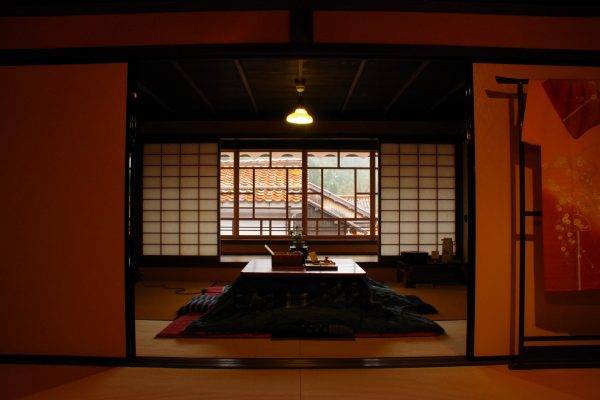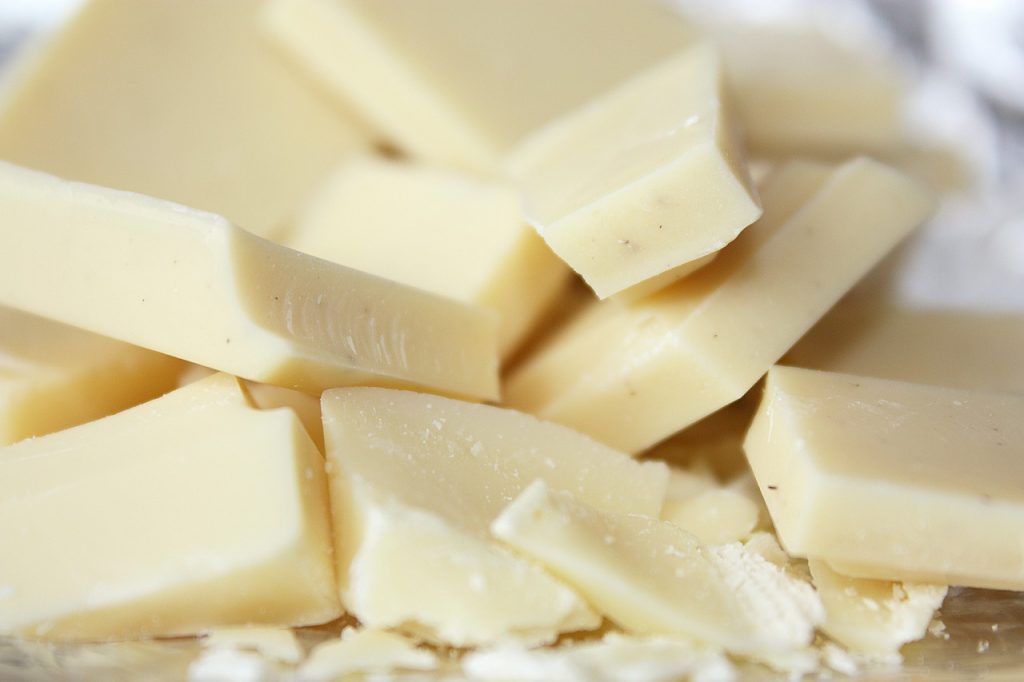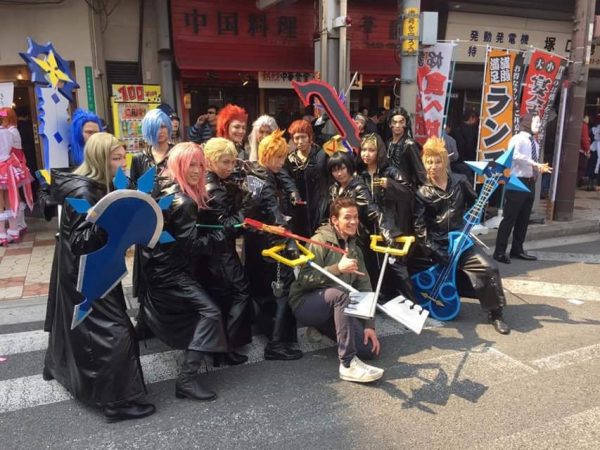The winter months in Japan aren’t as cold as in some other countries. Well, it depends which bit of Japan you’re in. Okinawa stays pretty mild, but up in Hokkaido they do snow sculpture contests.
A lot of Japanese houses and apartments still don’t have central heating. So when winter arrives, out come the blankets and fluffy socks. Plus everything else on this list. Take some hints from Japan on staying warm.
Kairo heat packs
Iron powder, and the magic of science, makes kairo a must-have in winter.
Take the plastic wrapper off, and don’t open the bag. Shake or bend it a little to get things going. The iron bits and other ‘ingredients’ in a kairo pack heat up automatically. No fire, no smoke, no lighter needed. Newer ones have different mixtures, to make the kairo heat up faster and stay hot for longer.

Stick these mini heaters to your skin (it’s safe), keep them in your pockets, or pop them in your shoes. The heat lasts for ages – the strongest ones claim to work for 20 hours, or even a whole day. When the kairo’s gone cold, peel it back off and bin it. This type of warming method isn’t reusable.
The quick, targeted warmth is awesome. We also love using kairo because they’re super cheap. Boxes of 30 or more sell for under 1,000 yen.
Underwear heat pads
Here in Japan, South Korea, and other bits of Asia, you can buy mugwort heat pad packs to stick in your pants.
Yeah, you read that right the first time. They’re made for women, and they look like sanitary pads… but they’re not, and shouldn’t be used for too long.

If you think this is weird, you should see what it’s inspired by. The original method’s a wooden stool with a hole in, so you can steam your own butt. And, uh, everything else around it.

Why the hell? Osmosis, that’s why.
According to mugwort herb steaming science, and if you’re female, your lady parts can absorb 42x more moisture than your forearm. Nobody can say you don’t know your butt from your elbow now, huh…
Wearing a full-length cape helps the heat spread to your whole body. Steam’s good for your skin and hair, too.
Haramaki
Keeping your tummy warm is real important. It’s said that a warm tummy helps with digestion, and improves circulation from your core. Why else would there be so many haramaki and stomach warmers on sale in Japan?
‘Haramaki’ means ‘stomach wrap’, but many versions are more like shorts. You might see them called ‘haramaki pants’ instead. Fluffy mini shorts with cute designs. Nobody’s gonna see it under your clothes, but your chosen haramaki design’s a cute thing you can keep to yourself.

It’s a bit like a snuggly scarf for your stomach. Helps relieve aches and pains, gives your lower back more support, that kinda stuff.
The downside is pulling your haramaki down when you need to pee. Hello, sudden blast of cold air. But Japan’s amazing heated toilet seats cancel that out.
Heat technology layers
Okay, Uniqlo trademarked ‘Heat Tech’. Doesn’t stop other shops selling their own ‘heat technology’ tops and leggings. Thin enough to layer under your clothes, and with the insulating power to keep you cosy.
People of all ages can get heat tech clothes, in loads of different styles (tank top, short sleeves, knee length, long sleeves, full length…) Uniqlo’s estimated that 1 in 3 Japanese people own something from their Heat Tech range.

Layering’s easier than wearing something too heavy. Especially in Japan, where buildings and trains are heated to sauna levels in winter. Heat teach layers are light, and the different neck shapes work with whatever you wear on top.
Hot carpet
Like an electric blanket, a hot carpet warms you with added power. No kidding, that’s what we call them.
There’ll be a power cord in the corner – plug in, switch on, and get toasty. Oh, you might need a Japanese plug adaptor for other countries first. And check the voltage, it’s different from places like the US and UK. Something to think about with any electronics you buy from Japan.
Once everything’s sorted, you can curl up on the spot like a cat in a sunbeam.

The great thing about hot carpets is: they don’t use much space, and they don’t waste energy. The electric bill’s a few yen per hour. And you can just heat the bit of the floor you’re sitting on, instead of the whole room.
Yutanpo
You might know the yutanpo better as a hot water bottle. The ‘yu’ in ‘yutanpo’ is for hot water, so there you go.
The typical Japanese yutanpo has a rounded, kinda oval shape, with a handle at one end and the cap at the other. They’re often ceramic, or made from heavy-duty plastic/resin. Some yutanpo are made with metal – put a cover on it before trying to warm your feet!

Heat some water, pour it in, close the cap/lid tight, and get toasty. The thicker plastic on a yutanpo keeps the heat for longer. If you fill one before you go to bed, it’ll probably still be warm when you wake up.
Yutanpo hot water bottles are reusable, every day if needed. Just… don’t reheat the water while it’s still inside. These may be durable and robust, but we don’t think they’re microwaveable.
A kotatsu table
We bet you’ve seen a kotatsu before, if you watch enough anime, or J-dramas, or both. And it’s got to have a bowl of mikan oranges on top, or it’s not winter. Fact. As long as you’re willing to believe every ‘slice of life’ Japanese show ever made.
The kotatsu’s a low table, with a heater underneath and a blanket sandwiched in the middle. It keeps the lower half of your body cosy. During the colder months, they come in real handy. Man, nothing beats hibernating at home under a kotatsu, watching TV, sipping a warm drink…

Be warned (and warmed): once you get your legs under a kotatsu, you won’t want to get up. For anything – even if there’s some guy outside handing out free money. That’s how awesome a kotatsu is. It’s way too easy to fall asleep underneath.
Hanten
Like we said, a kotatsu won’t cover your top half. But a hanten coat will. They’re made in traditional Japanese style with half sleeves, and great to wear around the house. Think of it like Japan’s take on a short dressing gown or robe.
Many hanten are padded for extra insulation. Thick enough for warmth, but not so much that you look like a marshmallow. And you can pick a design that matches – or stylishly clashes with – a kotatsu blanket.

Hanten coats have been around since the Edo period (from the 18th century, close enough). So they’re tried and tested, generations over.
They were commonly worn by people who did manual labour. Enough that ‘half sleeves’ became the Japanese nickname for the working class. We don’t think anyone uses that name any more, though. Ain’t no shame in keeping your upper body temperature at a reasonable level.
Hang in there until spring, with warm winter goods
Try Japan’s weird warming stuff this winter – buy from DEJAPAN online for global delivery.




